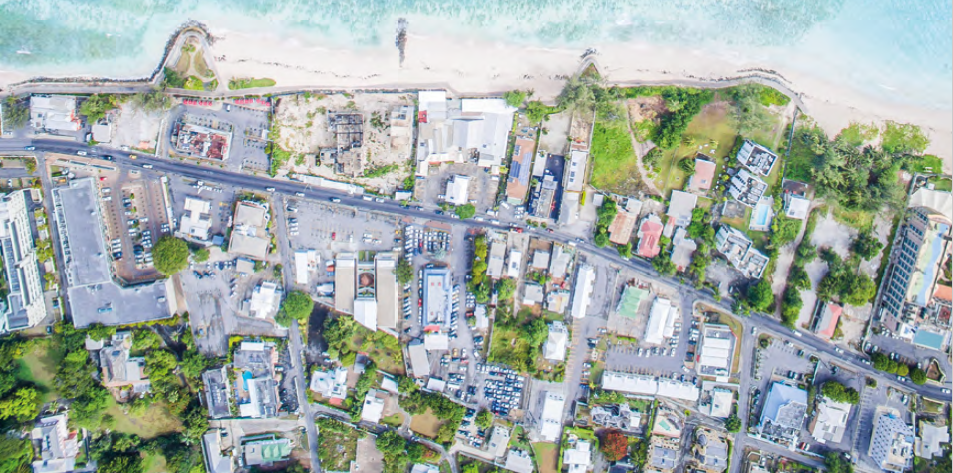The Paris Agreement, ratified by 193 parties, including all countries in Latin America and the Caribbean, aims to strengthen the global response to climate change including by increasing the ability of countries to adapt to the adverse impacts of climate change and foster climate resilience and by making finance flows consistent with a pathway towards climate-resilient development.
In Latin America and the Caribbean, the warming trend is real. The average rate at which temperatures increased was around 0.2 °C per decade between 1991 and 2021, compared to 0.1 °C per decade between 1961 and 1990.
Consequences are multiple, from melting glaciers in the tropical Andes to sea level rise threatening important population hubs, and droughts damaging crops, infrastructure and the livability of humans and ecosystems. Extreme weather events such as hurricanes and floods have also induced substantial human and economic losses, which underlines the need to better assess climate resilient challenges and solutions and ensure that planning exercises mainstream climate considerations at all levels: data gathering, policy reform, investment design and execution, etc.
Long-term adaptation planning (LTAP) is an essential element of the response to the impacts of climate change and cannot be overshadowed by the decarbonization targets in a region that is highly vulnerable to climate change. That is why the IDB and AFD partnered with the World Resource Institute (WRI) to understand the state of the art of adaptation mainstreaming in planning exercises and collect lessons learned from eight countries: Argentina, Barbados, Colombia, Costa Rica, Guatemala, Jamaica, Mexico, and Uruguay.
This report summarizes the tools and methodologies for LTAP approaches and maps the adaptation work done by eight Latin American and Caribbean countries on this topic. The results of this publication rely on qualitative methods ranging from literature review, interviews with experts and country officials, to a workshop held with the countries involved to gather the main barriers to LTAP and the best regional practices.
Here are the main barriers and recommendations:
| Barrier | Recommendations |
| A need for development and adherence to a long-term resilience vision and improved policy alignment | Tangibly align climate-relevant policy frameworks and laws to better leverage the synergies between climate adaptation action and national priorities. |
| Lack of cross-sectoral coordination | Promote efficient public action based on greater coordination and collaboration between all sectors in order to plan and implement necessary adaptation measures. |
| Limited finance | Develop guidance on how to incentivize and involve the private sector to unlock larger adaptation investments and innovation for long-term planning. |
| A need to continue widening inclusive and meaningful public participation efforts | Develop guidance in Spanish on step-by-step mechanisms and best practices from the region on how to involve stakeholders and the broader civil society in long-term planning exercises to ensure public support and continuity of strategic climate action plans. |
| Lack of, or limited availability of information and tools | Gather, monitor and share evidence of adaptation benefits to generate greater support for adaptation commitment and action. Create easy-to-use, sector-specific guides and tools in both Spanish and English for ministry officials on how to plan beyond short-term impacts and how to estimate longer-term adaptation costs. Create more frequent opportunities, including virtual, for LAC countries to share their experiences and learn from each other. |
As mentioned by IPCC (AR6 WGII) it is clear now that minor, marginal, reactive or incremental changes won’t be sufficient. LTAP and recommendations can pave the way to overcome current adaptation that IPCC analyzed as often short-term, fragmented, small in scale, incremental, sector-specific, and designed to respond to current impacts or near-term risks.
Long-Term Adaptation Planning at COP27
The 27th annual UN Climate Change Conference is being held in Sharm El-Sheikh (Egypt). The largest annual meeting of the year brings together key actors in search of greater climate ambition. For Latin America and the Caribbean, it is an opportunity to strengthen and align development goals with climate objectives and translate them into carbon-free and climate-resilient economies.
It was at COP27 that eight LAC countries gained recommendations along with country representatives who are a partner of two AFD’s programs (2050 Facility and AdaptAction). The former tried to progressively include adaptation in LTS that was usually focused on mitigation. The latter strove to experiment with some LTAP methodologies, such as Dynamic Adaptive Policy Pathways in Africa, particularly for integrated coastal zone management in Senegal.
As developing countries continue to enhance their knowledge and science-based approaches to develop climate-resilient policies and investments, it is essential to support them and facilitate knowledge and experience sharing in different regions so as to strengthen their capacities as they develop their NDCs, LTSs, or NAPs and not just to check in the box but ensuring that the documents are country-owned and transversally shared for all sectors to have strategies aligned to the country’s climate commitments.
Long-term plans must incorporate adaptation policies to ensure the sustainability and viability of national development priorities, programs, goals, and investment strategies. Building long-term resilience to present and future climate change impacts, and the socioeconomic and ecological effects that accompany them, requires long-term adaptation planning and flexible options to avoid maladaption. The resilience built today is one step closer to ensuring tomorrow’s adaptation.


Leave a Reply